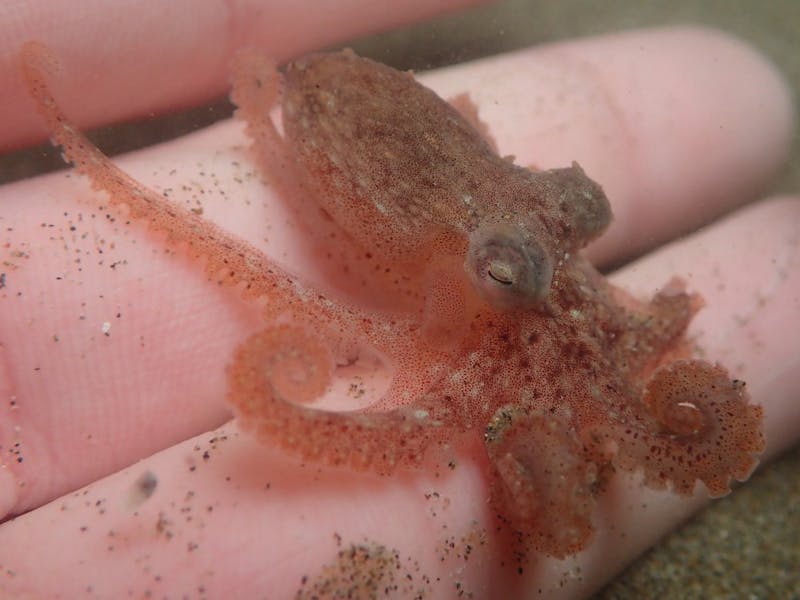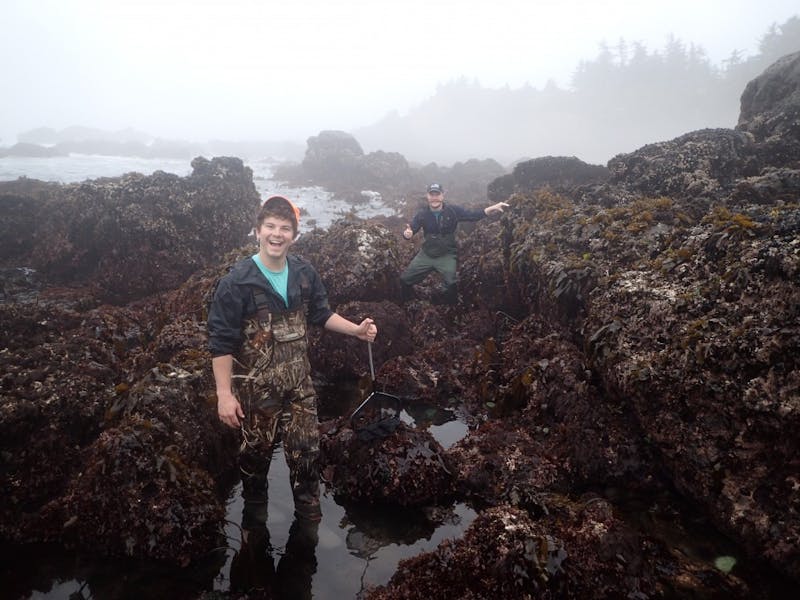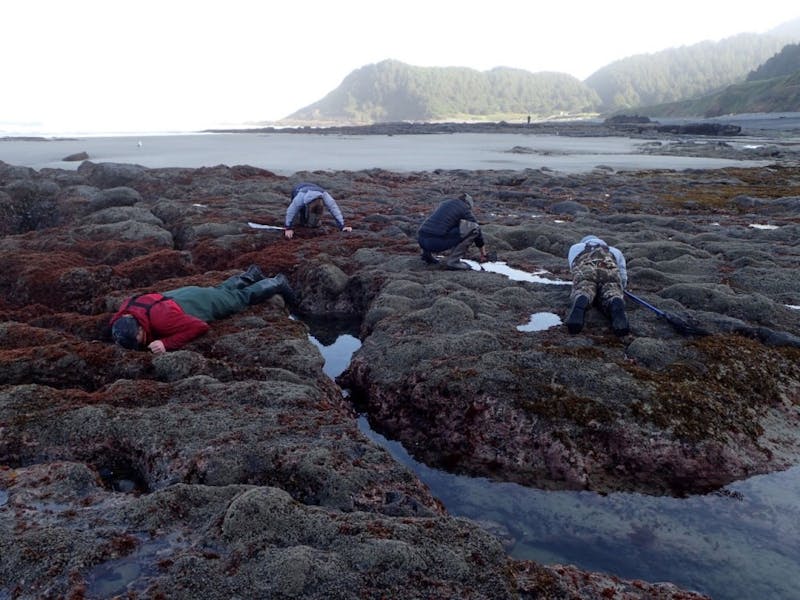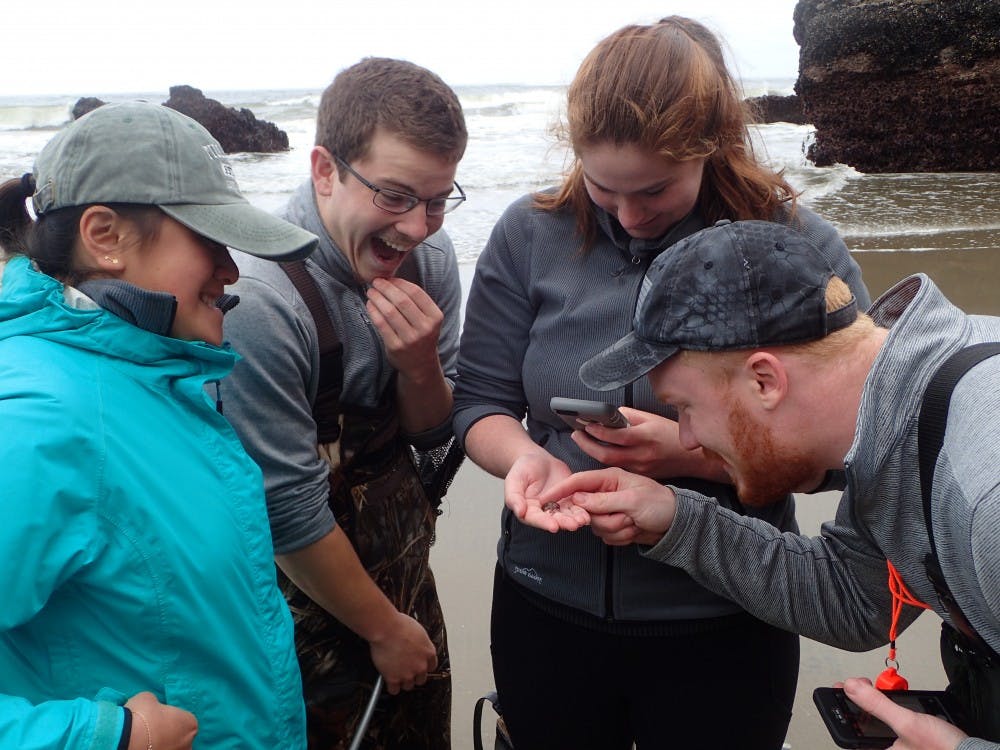Oregonians know trips to the coast often mean a day of exploring beaches in search of sea life. For a group of University of Portland seniors and their adviser, last summer consisted of spending time at the tide pools and doing lab experiments for two separate projects, one of which received a first-place award at a research conference earlier this month.
Senior biology majors Sawyer Reid, Katy Kennedy and Kara Termulo, and senior biochemistry major Zack Turley, along with biology professor Tara Prestholdt, studied the feeding patterns of purple shore crabs along the Oregon Coast. They also did a study collecting data on populations of nudibranchs (invertebrate sea slugs that have lost their shells) and analyzed how climate change has affected their migration.

The group presented posters on both projects at the Sigma Xi Student Research Conference at Portland State University on Nov. 4, winning first place for undergraduate research in biology for the crab research. The conference is held annually by the regional chapter of Sigma Xi, the national scientific honor society, and allows undergraduate and graduate science students to present their research.
Prestholdt has been studying crabs for six years and oversaw the “Crab Lab” in Swindells Hall. The award-winning experiment focused on the capacity of the animals to shed and regenerate limbs, a phenomenon Prestholdt believes can have applications for humans as well.
“The ability of animals to shed and regenerate appendages is something we can’t do, and what is it about the evolution of that that is relevant to us as humans and to non-human systems?” Prestholdt said. “Regeneration of tissues and parts - that has a clear relevance in the medical field.”
To answer the broader question of why certain species lose the ability to regenerate limbs during evolution, Prestholdt explained the experiment aimed to discover if the energy a crab invests into regenerating a limb is worthwhile (versus using it to get bigger or migrate).

The group collected 183 crabs from Barview Jetty and observed their feeding patterns based on how many limbs they had. If a crab grows back its limbs, its feeding abilities are restored to what they were before losing the limbs, which accounts for a significant improvement.
The project was about half field work and half lab research on campus. Usually, research does not provide students the opportunity to do both fieldwork and lab research, the students said.
“(I knew) I’m going to be up at 5 a.m., it’s probably still going to be dark out, and I’m going to be on my hands and knees with water up to my waist, in a tidepool, looking for nudibranchs, playing with crabs, finding fish - it was just great,” Kennedy said.

The students also came up with and designed the experiment themselves, which Turley says made the whole process more meaningful.
“Going through trial and lots of error and planning out the entire research, it was more personal to us,” Turley said. “It wasn’t like following steps in a lab book.”
Though the crab lab has been replaced by another project in Swindells Hall, Prestholdt says she plans to apply for more funding to continue the research.








